27+ Must-See Korean Horror Movies
South Korean horror movies skyrocketed in popularity in the 2010s, opening a global audience to a plethora of great films. Dive into the history of South Korean horror with this list of some of the country’s best fright films and thrillers.
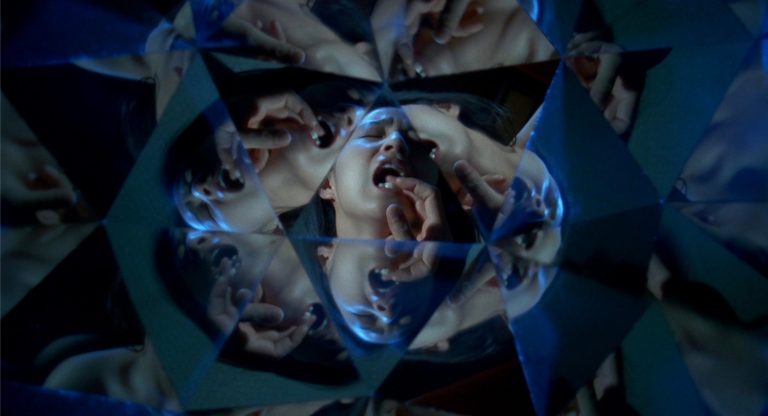
Table of Contents
The South Korean film industry has become known for producing some of the world’s most exciting genre films. In particular, the country’s horror and thriller movies have reputations for being psychologically intense and, at times, disturbingly brutal. South Korean films reached a milestone in worldwide recognition in 2019 and 2020 with Bong Joon-ho’s darkly comedic thriller Parasite winning numerous awards including the Palm d’Or from Cannes and multiple Academy Awards. However, movies from South Korea had been on the rise for years prior.
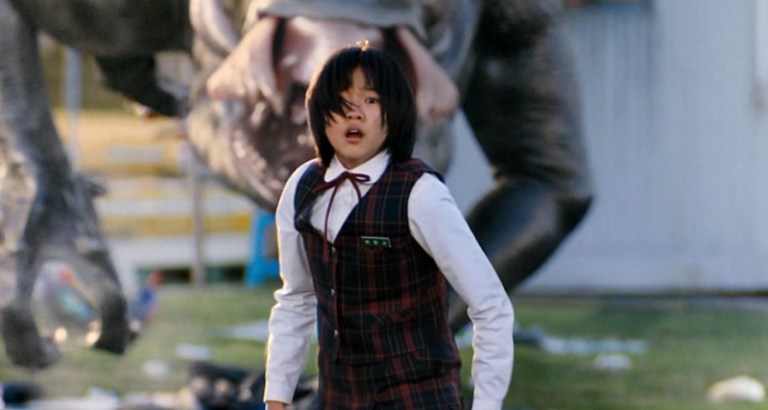
This list is designed for people who have just recently started getting into South Korean horror movies as well as those who have been fans of K-horror for years. It includes a variety of films ranging from the most popular and widely acclaimed masterpieces to fun hidden gems you might not have heard of. To help guide you in finding something new to watch, the list is broken up into the three major horror-related film genres South Korea is famous for.
Supernatural Korean Horror
The Devil’s Stairway (1964)
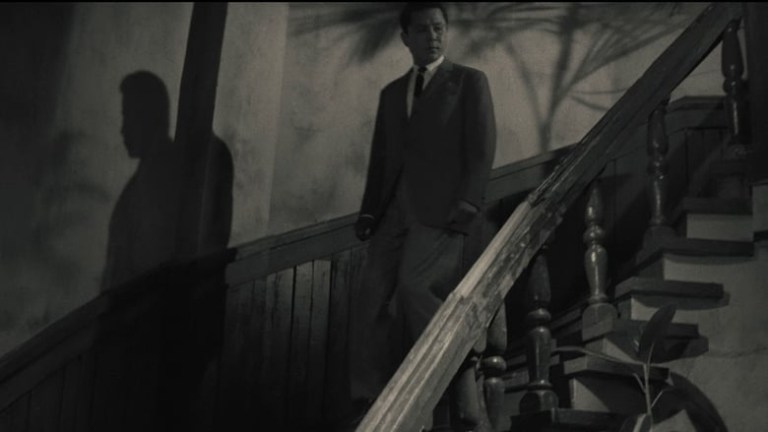
Also known as The Evil Stairs, The Devil’s Stairway is a dark story about a surgeon, Dr. Hyeon, who is involved in a secret relationship with a nurse named Nam. When Nam learns of Hyeon’s plan to marry the daughter of the hospital director, Nam refuses to break of their relationship quietly. Hyeon is intent on keeping Nam quiet by whatever means necessary, but his deeds come back to haunt him in literal ways. The Devil’s Stairway is a shadowy work of slow-burning tension that is a standout of early South Korean horror.
Woman Chasing the Butterfly of Death (1978)

Woman Chasing the Butterfly of Death is a wild film featuring a series of vignettes centered on an unfortunate man named Young-gul. During the course of the film, Young-gul is threatened with a murder/suicide, is accosted by bookseller who claims to have conquered death, and must protect his liver from being eaten by a beautiful woman. And that’s just scratching the surface of this fantastically bizarre movie. Woman Chasing the Butterfly of Death is also known as Killer Butterfly.
Whispering Corridors (1998)
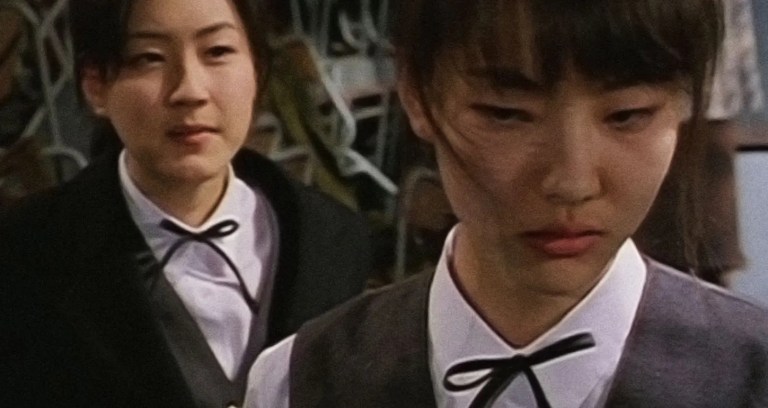
Directed by Park Ki-hyeong, Whispering Corridors is one of the earliest films in the East Asian horror boom that started in the late 90s. Its plot involves rumors of a ghost haunting an all-female high school after a teacher is found dead. Many stylistic parallels can be drawn between Whispering Corridors and the more recognized Japanese ghost movies being released around the same time. However, the film’s depiction of the abusive realities of the harsh South Korean education system resonated strongly with domestic audiences, propelling Whispering Corridors to becoming a surprise hit upon release.
The popularity of the film led to a series of films under the Whispering Corridors name, though each film contains a standalone plot. Films in the series include:
- Whispering Corridors (1998)
- Memento Mori (1999)
- Wishing Stairs (2003)
- Voice (2005)
- A Blood Pledge (2009)
- The Humming (2020)
The Ring Virus (1999)
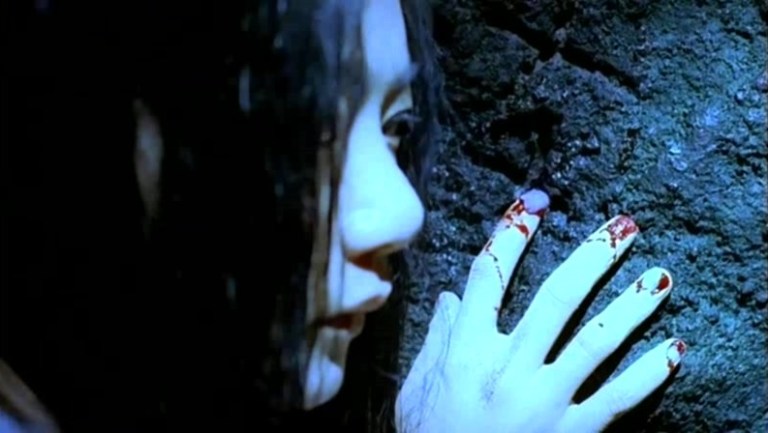
Before Hollywood got ahold of Hideo Nakata’s 1998 J-horror masterpiece Ringu (aka Ring), South Korea was the first country to remake the now-classic ghost story. The Ring Virus falls somewhere between the original Ring novel by Koji Suzuki and the 1998 Japanese film adaptation in terms of its plot. Anyone who has seen the Japanese movie will be familiar with its story of a cursed VHS tape and the journalist trying to unravel its secrets before becoming its next victim, but director Kim Dong-bin’s version is slightly more close to the novel in some of its details. Even viewers familiar with both the Japanese and American versions of this story will find the South Korean take to be a worthwhile and distinct interpretation.
A Tale of Two Sisters (2003)
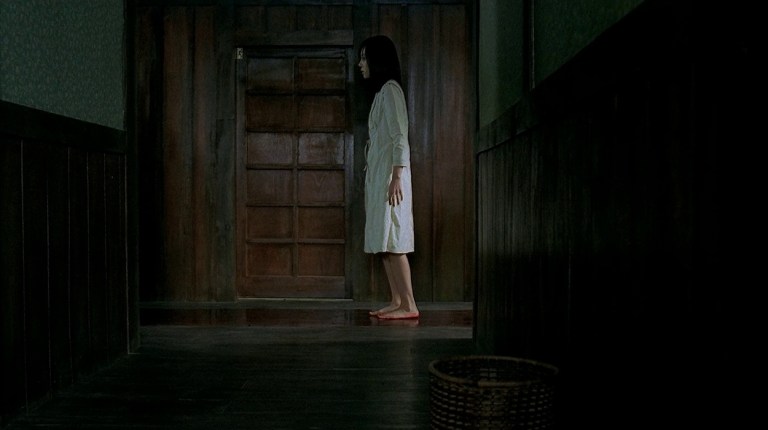
A Tale of Two Sisters is a masterful blending of a psychological thriller and a haunted house movie. Teenager Su-mi returns home to live with her younger sister, father, and stepmother after being treated for mental issues. While readjusting to her life at home, Su-mi clashes with her father and stepmother while being very protective of her sister. Family secrets start to unravel as a ghostly presence makes itself known inside the house. Much of the tension in A Tale of Two Sisters is built upon the viewer being kept off-balance as the haunting and Su-mi’s fragile mental state overlap to the point where the reality of what we are seeing is put into question. This is a must-see for any fan of haunted house movies.
R-Point (2004)
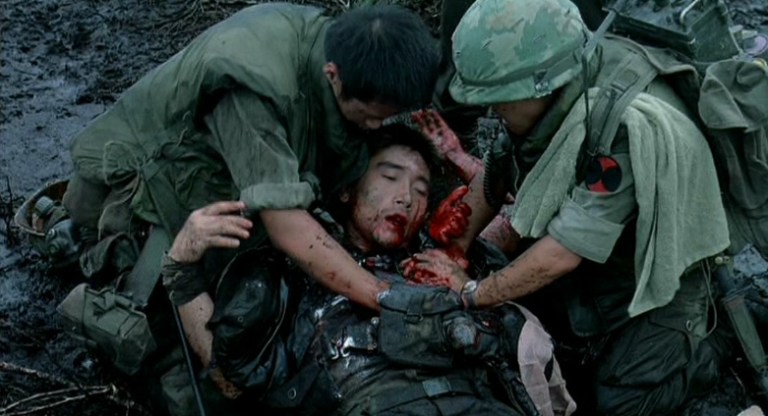
R-Point is a bloody action-horror film with a supernatural twist that adds a layer of psychological tension to the story. In Vietnam in 1972, radio transmissions prompt a squad of South Korean soldiers to go looking for a missing platoon. The soldiers have one week to locate the platoon and extract them from Romeo Point (R-Point), but their mission takes a deadly turn when they approach their destination. Paranoia and madness creep in as the soldiers are besieged by enemies both human and otherworldly.
White: The Melody of the Curse (2011)
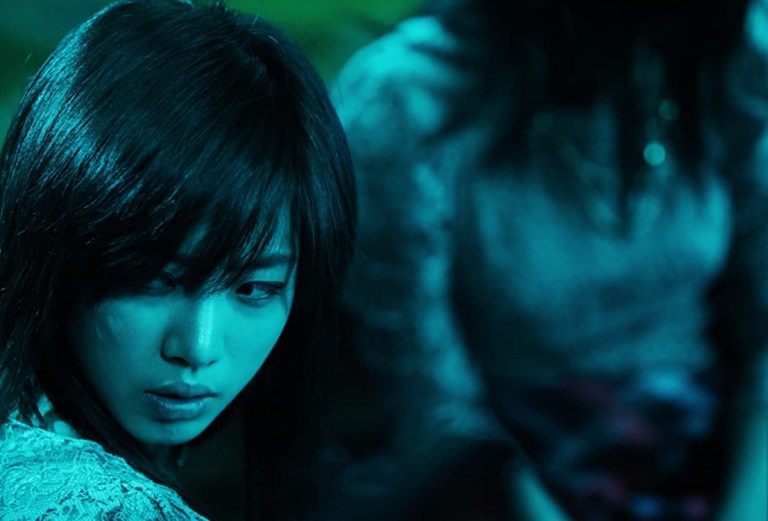
K-pop grew to dominate the world in the 2010s, and in 2011 South Korean filmmakers used the rising popularity of Korean pop music as the foundation for a grossly underrated ghost movie. White: The Melody of the Curse (aka White: Melody of Death) is about a South Korean girl group who discovers an old VHS tape inside a rehearsal space that had remained unused ever since a fatal tragedy in the building years prior. The tape contains an unreleased music video for a song titled “White.” The group uses the song for themselves which skyrockets the young women to fame, but which also unleashes a curse that threatens to destroy the group from the inside. White can be difficult to find streaming or on disc, but hopefully with the popularity of K-pop we will see a rerelease sometime soon.
Gonjiam: Haunted Asylum (2018)
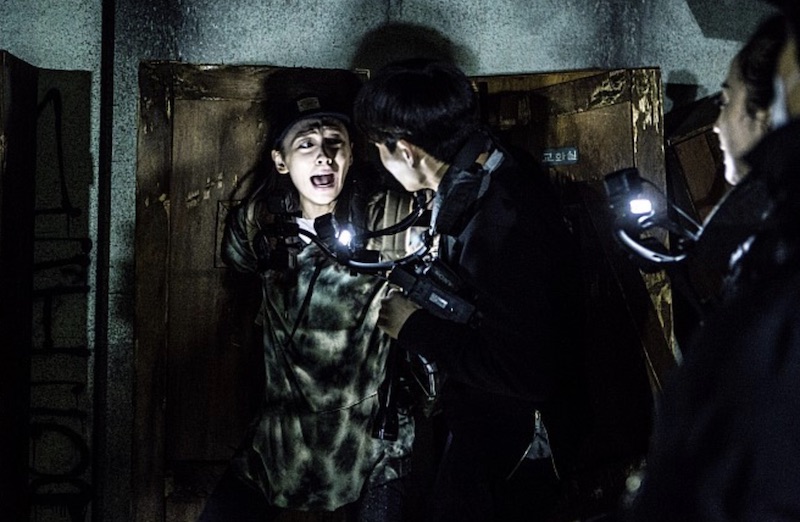
Gonjiam: Haunted Hospital is an excellent found footage horror movie that follows a YouTuber who gathers a group to explore an abandoned psychiatric hospital. The hospital is reported to be haunted, and the group livestreams their experiences as they hunt for ghosts. As the night goes on, they encounter a terrifying series of events as the spirits of the hospital make themselves known. The movie was inspired by the real-life Gonjiam Psychiatric Hospital which is the subject of numerous urban legends. The movie, however, was mostly shot in the abandoned National Maritime High School in Busan, a location which also has stories about hauntings.
The Wrath (2018)

Set sometime during the Joseon era of Korea, The Wrath takes place within the cursed household of a high-ranking official in the Joseon Kingdom. Two of three of the official’s sons have died on their wedding night thanks to a vengeful spirit attached to the family. When the third and final son is killed by the spirit after impregnating a young common woman, the pregnant woman becomes the focus of the spirit’s malevolence. The young woman is also the focus of the the family’s harsh matriarch and the conniving widows of the other two sons, leading to a battle on spiritual and political fronts.
Korean Monster Movies
Yongary, Monster from the Deep (1967)
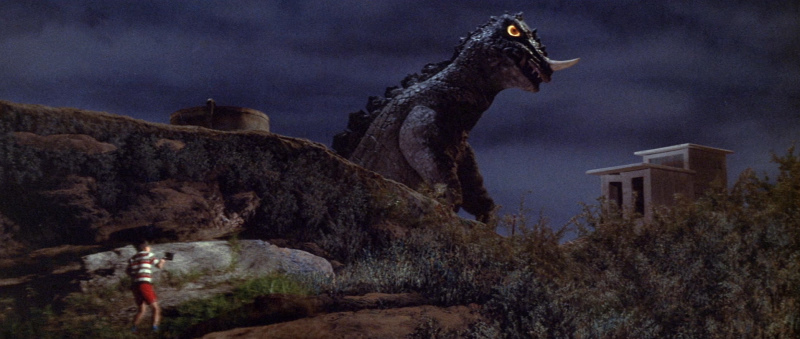
Created with the support of Japanese production Toei, Yongary, Monster from the Deep is a South Korean kaiju (giant monster) movie made in the wake of the continued success of the Godzilla films. The movie is about an enormous dinosaur-like creature that rampages through South Korea after emerging from the ground. The movie is a rather generic imitation of the Godzilla movies, but it’s a goofy blast for fans of 1960’s kaiju films. Yongary isn’t the first Korean kaiju. That distinction goes to Bulgasari from 1962, though Buglasari is considered to be a lost film.
A Monstrous Corpse (1981)
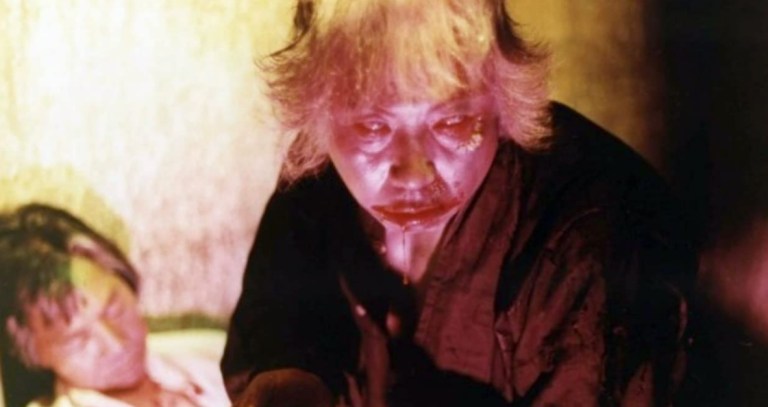
Though zombie movies from South Korea didn’t take off in a big way until Train to Busan (2016), A Monstrous Corpse predates the later film by 35 years. A Monstrous Corpse (also known by its original Korean title Goeshi) is about a woman who is caught up in a murder investigation while traveling with a stranger on her way to visit her sister. The living dead are to blame, but it might be too late before the local authorities are convinced of that fact. A Monstrous Corpse is quite tame in comparison to the European zombie movies it imitates, but it is still a fun and important relic of film history.
The Host (2006)

Bong Joon-ho’s The Host is a brilliant monster that works well for an international audience, but it has a deeper significance for South Korean viewers. The plot involves a family coming together to rescue the family’s youngest member, a girl named Hyun-seo, after a giant monster takes her back to its lair. However, like in many of Bon Joon-ho’s films, the story involves a skewering of different parts of South Korean society and government. The United States is also the subject of a critical view, with the incident that creates the monster in The Host being based on a real-life occurrence in the year 2000 involving the US military dumping large amounts of formaldehyde down a drain in Seoul.
Thirst (2009)
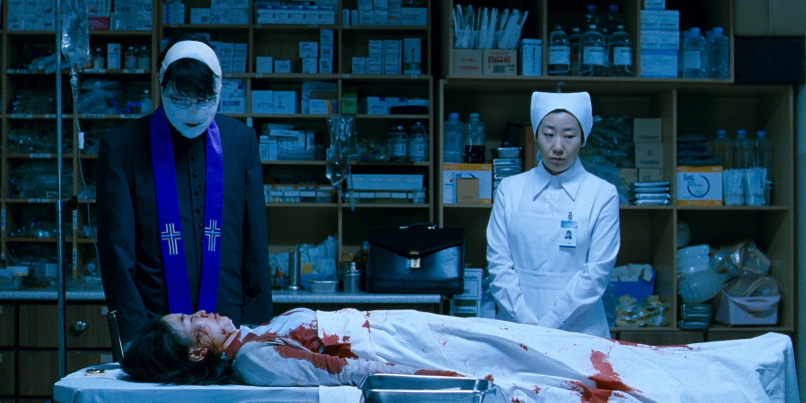
Thirst is a wonderfully atmospheric take on vampires from Park Chan-wook, writer/director of Oldboy (2003). Thirst stars Song Kang-ho as Sang-hyun, a Catholic priest who volunteers to take part in an experiment to create a vaccine for a deadly virus. The experiment nearly kills Sang-hyun, but is recovery is deemed miraculous by followers of his faith. However, Sang-hyun’s own faith is tested when he develops a craving for blood and some of the more carnal desires of the flesh.
The Wailing (2016)
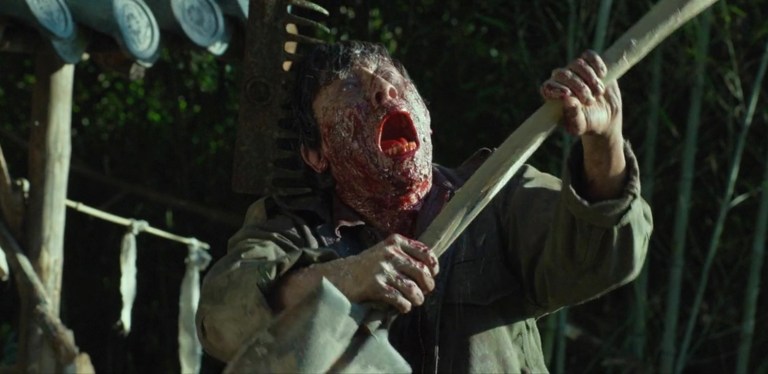
The Wailing is a gore-filled horror film about a police officer investigating a series of murders in a small rural town. The perpetrators of the crimes all appear to suffer from some sort of horrible illness, but the locals have a different idea about what (and who) is behind the deaths. The Wailing is a great combination of mystery and bloody action, and its aggressively possessed monsters make it a perfect film for fans of movies like The Evil Dead (1981).
Train to Busan (2016)

Train to Busan is an amazing zombie movie that manages to balance action and heart in a way that has touched audiences from around the world. The story is centered on a workaholic father as he rides with his young daughter on a train bound for the city of Busan. Their train departs just as South Korea is beginning to be overtaken by an outbreak turning people into fast and aggressive zombies, and the film focuses on the man’s struggle to protect his daughter along with the friends and enemies he meets on the train. Train to Busan was a hit in South Korea when it came out, and its popularity spread across the world in the ensuing years.
Monstrum (2018)
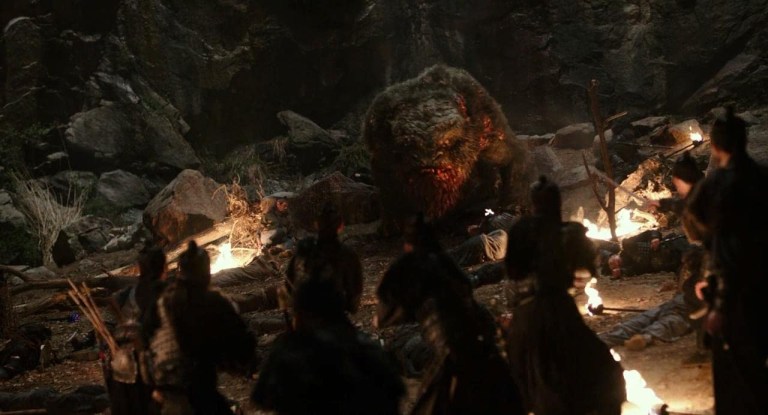
Monstrum is an action-packed creature feature with a great monster. Set in the 1500s, rumors of a man-eating beast threaten the reign of King Jungjong. The kingdom has already been ravaged by a plague, and the king is forced to send a group to find out if there is any truth to the rumors or if they are just fear-mongering tactics designed to diminish his rule. There is a ton of fun, bloody action in Monstrum along with a touch of the political intrigue that has come to be expected from period pieces like this.
Zombie For Sale (2019)
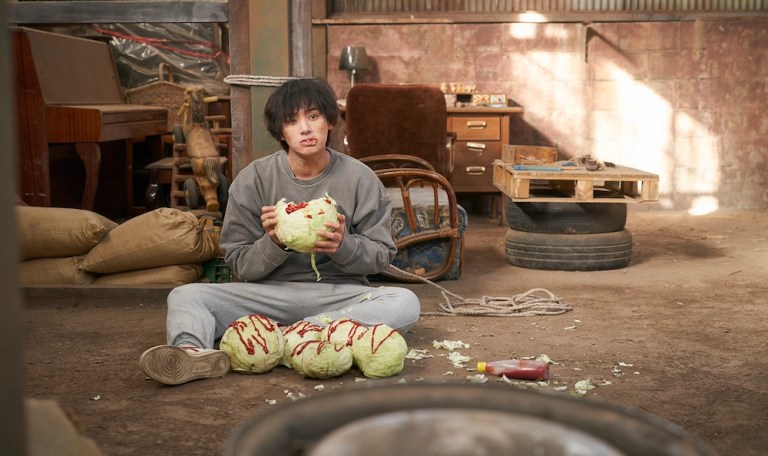
Zombie for Sale (aka The Odd Family: Zombie for Sale) is a rare zombie comedy from South Korea. The Park family is composed of swindlers and hustlers, and they may have found their most lucrative hustle of all in the form of a zombie that has escaped from a pharmaceutical company. When the family discovers that the zombie’s bite causes an elderly man to feel reinvigorated, they decide to charge locals for the chance to get bitten as well. Things, of course, go badly, but in an always fun way.
#Alive (2020)
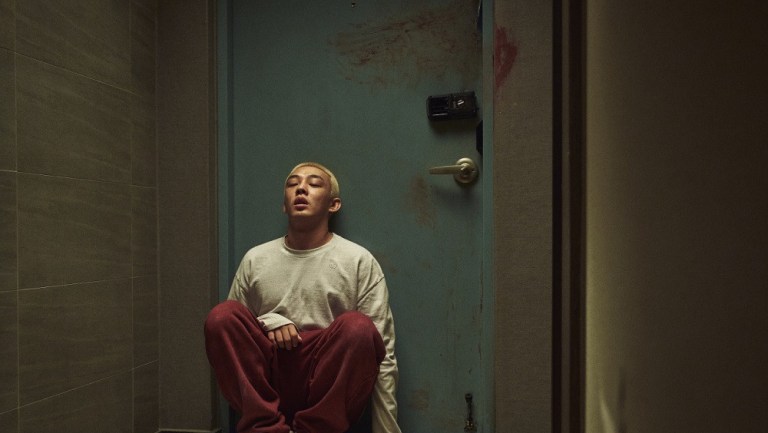
When a zombie apocalypse begins, Oh Joon-woo is trapped alone in his family’s apartment. What begins as a hopeful struggle to survive turns into an increasingly desperate battle against hunger and isolation as Joon-woo’s mental state declines even more rapidly than his bodily health. But even if he can find other living people, they may be just as dangerous as the dead walking just outside his door. #Alive has some good action scattered throughout the film, but its heavy focus on the development of one main character who does his best to avoid fights sets the movie apart from many other Korean zombie movies of the era.
Project Wolf Hunting (2022)

A cargo ship transporting prisoners from the Philippines to South Korea is the setting of a ridiculously gory slaughter in Project Wolf Hunting. The movie begins as a prison-break-on-a-ship film, but about halfway through it turns into a monster movie when a nearly indestructible bio-weapon hidden on the ship wakes up with an unquenchable thirst for violence. While the movie’s story might be a bit too complicated for its own good, the action is so good that most people won’t care if they miss some of the finer details of the backstory.
Crime and Domestic Thrillers from Korea
The Housemaid (1960)
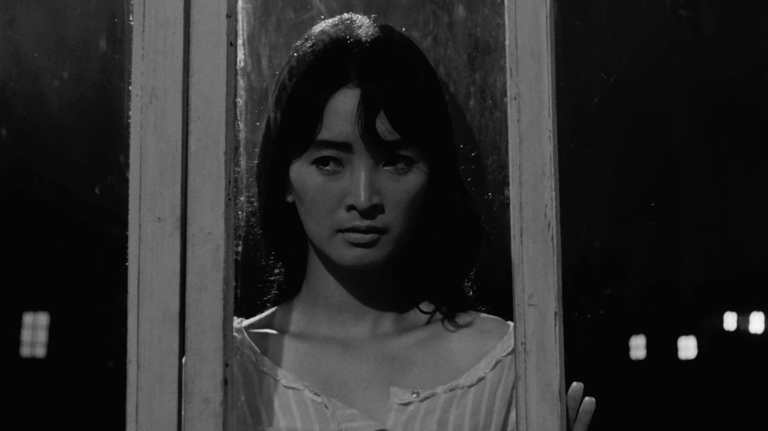
The Housemaid is a highly influential classic of South Korean cinema, and it is a must-see for any fan of the country’s films. The film offers a pointed critique of the changing social statuses in South Korea at the time, following a family that is trying to live beyond their means. A housemaid is hired to help out, but her intense presence threatens to shatter the already fragile foundation the family has built. The writer and director of The Housemaid, Kim Ki-young, remade his film twice with Woman of Fire (1971) and Woman of Fire ’82 (1982).
Suddenly in the Dark (1981)
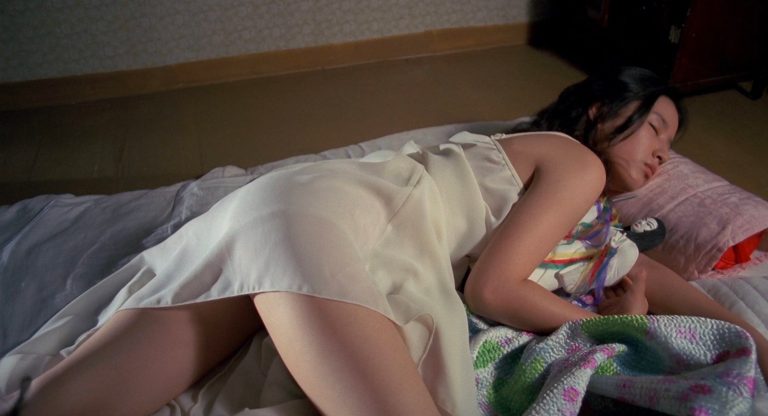
With a visually mesmerizing style, Suddenly in the Dark tells the story of a couple whose life falls into turmoil after they hire a new maid. The wife of the household, Seon-hee, grows increasingly paranoid about the intentions of the young and pretty maid. Seon-hee has visions of treachery and violence about the maid and the creepy doll she brought into the house with her, leading to an increasingly bizarre and dangerous set of circumstances.
The Quiet Family (1998)
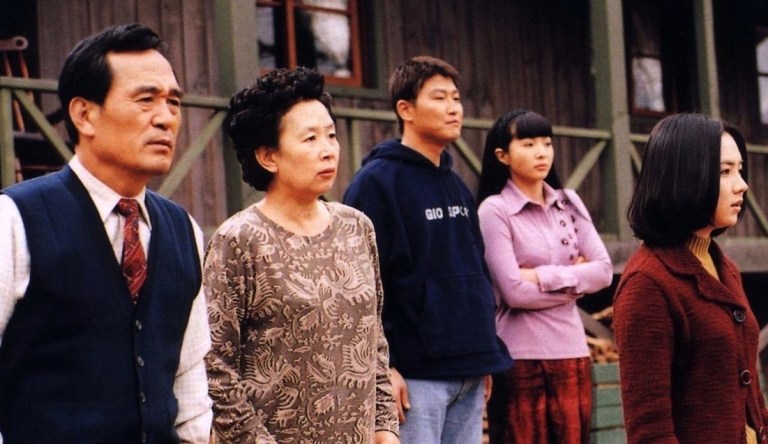
In The Quiet Family, a darkly comedic thriller, the Kang family tries to make a go of it after opening a lodge in a remote area outside of the city. However, their new business endeavor suffers a series of deadly setbacks. When their first lodger commits suicide in his room, the family decides to hide the body rather than suffer bad publicity which would kill their business. As people continue to unexpectedly die in their lodge, the family’s troubles quickly spiral out of control. The Quiet Family is the debut feature from Kim Jee-woon, director of great films including A Tale of Two Sisters (2003), I Saw the Devil (2010), and The Good, The Bad, The Weird (2008).
Tell Me Something (1999)
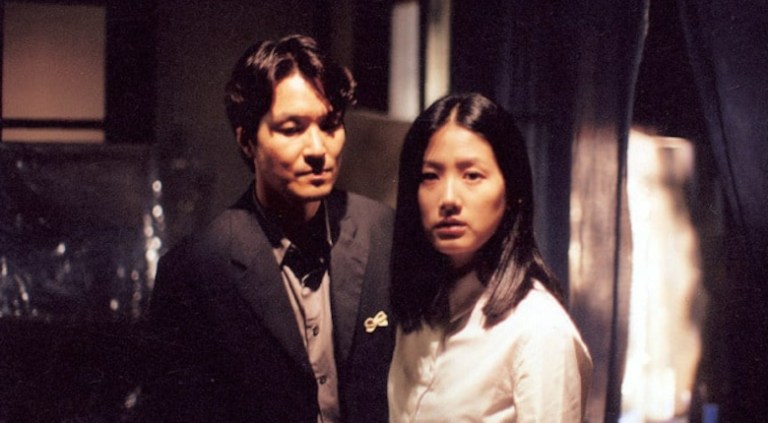
Tell Me Something is a dark crime thriller that was a significant part of the early stages of the “Korean Wave” that saw pop-culture from South Korea finding increased success abroad. The movie is about a detective investigating a case involving the discovery of a series of garbage bags containing mismatched body parts. The gruesome imagery present in Tell Me Something is a precursor to the bloody South Korean crime thrillers released in the following decades, though the movie focuses more on tension rather than overt violence.
The Isle (2000)
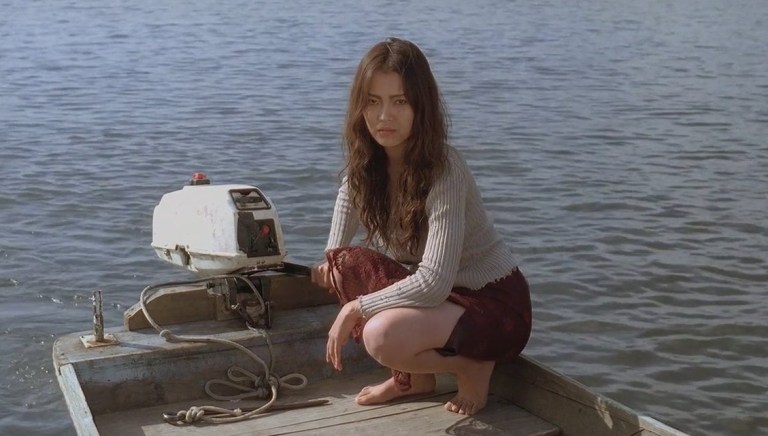
A movie that reportedly shocked and disgusted viewers at various film festivals, The Isle is a beautiful and disturbing film set on an picturesque lake. Hee-jin runs a business on the lake, renting out tiny floating cottages to fisherman and other visitor. Hee-jin also provides other services, including transportation, selling supplies, and providing prostitutes. Hee-jin forms a bond with a suicidal man renting one of her cottages, and their bond is one that leads to violence and death. The Isle isn’t for the squeamish.
I Saw the Devil (2010)
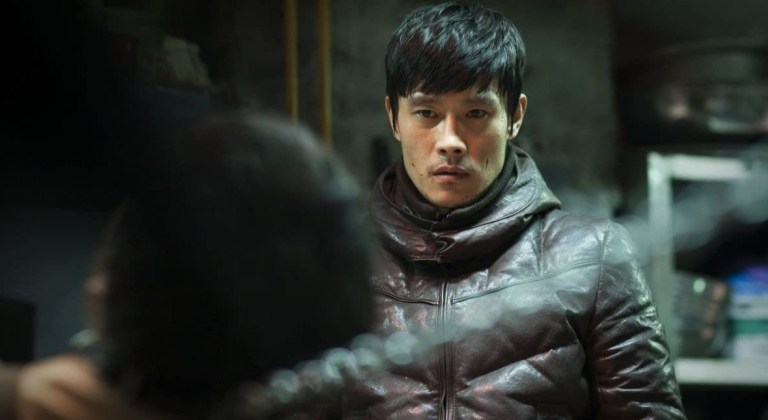
After his pregnant fiancée is brutally murdered and dismembered, National Intelligence Service agent Kim Soo-hyun vows to get revenge on her killer. Soo-hyun puts his career and life in jeopardy as he hunts for the murdered, and once he finds the culprit, his revenge extends far beyond what viewers may expect. I Saw the Devil is a spectacular crime thriller that crosses into horror through its explosive bouts of brutality and the dark places it goes psychologically.
Bedevilled (2010)
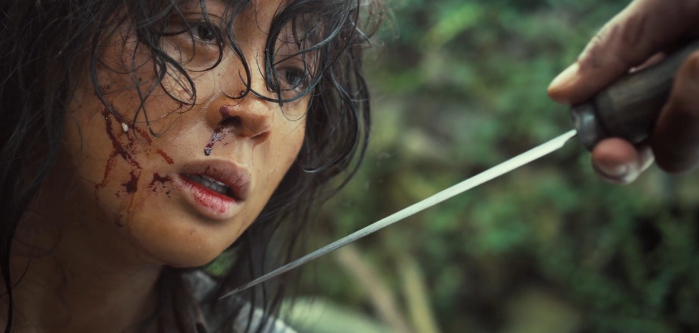
Bok-nam is a mother living on a remote island with her young daughter. Bok-nam and her daughter are subjected to the abuses of pretty much everyone in their village, and when the pair’s escape attempt tragically fails, Bok-nam snaps. Bok-nam embarks on a path of rage-fueled revenge against everyone who has done her and her daughter wrong. Bedevilled is a bloody and brutal revenge thriller that became a hit around the world, winning multiple awards after its release.
The Handmaiden (2016)
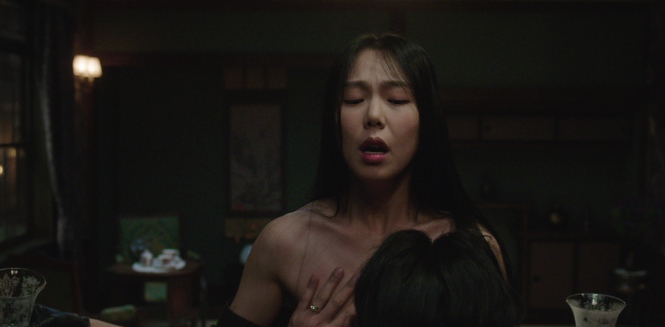
Directed by Park Chan-wook, The Handmaiden is a gorgeous film of lust, deception, and betrayal set in Japanese-occupied Korea. The film starts out as a plot by a con-man to trick a Japanese heiress into marrying him so he can have her committed to an asylum and take her inheritance, but there are plots within plots in The Handmaiden. The twisty tale is a staggeringly beautiful erotic thriller.
Parasite (2019)

For many people around the world, Parasite is the film that finally made them take notice of South Korea’s rich history of fantastic films. It earned the unprecedented achievement of winning both Best Picture and Best International Feature at the 2020 Academy Awards, breaking down barriers and showing how outdated the Academy’s western-centric view is. For those who haven’t experienced Parasite, it is a thriller with dark comedy about the relationship formed between two families of very different social classes. The Kim family cons their way into working for the affluent Park family, and the con leads to the exposure of dark and dangerous secrets. If you have any interest in South Korean films and haven’t seen Parasite yet, put it at the top of your list.
More Great South Korean Horror Movies
- Phone (2002) is the story of a journalist who investigates what she thinks may be a cursed phone number. The film was extremely successful, being on of the top ten domestic releases in South Korea in 2002.
- Acacia (2003) is about an adopted boy who becomes increasing withdrawn and violent as a series of strange events occur involving an acacia tree.
- The Doll Master (2004) features a group of young people who travel to a remote museum to have dolls made in their image, but they are in for a nightmarish encounter instead.
- Blood Rain (2005) is a mystery set in 1808 about an investigation into a series of gruesome murders that reveals secrets from the past.
- The Red Shoes (2005), inspired by the story of the same name by Hans Christian Andersen, is a gory story about a cursed pair of high heels found by a young mother.
- Arang (2006) is a supernatural horror film about detectives investigating a serial killer, when one of the detectives begins to have nightmares about a young girl who died years before.
- Hansel and Gretel (2007) is a different (and gruesome) take on the Grimm’s fairy tale, featuring a trio of creepy children who lead a man into their cottage in the woods.
- Death Bell (2008) is a fun and gory horror film about a group of elite students who are trapped inside their school and forced to participate in a “game” where failure to answer questions correctly means death for the students.
- Hide and Seek (2013) follows two families as they begin to realize that strangers may be living in their homes without their knowledge.
- Horror Stories (2012) is an anthology film containing four shorts framed with a story about a high school student forced to tell scary stories to a serial killer.
- The Piper (2015) takes place in the 1950s and is a grim tale inspired by the folktale “The Pied Piper of Hamelin.”
- The Mimic (2017) is based on the urban legend of the Jangsan Tiger, a creature that mimics human voices to lure people to their doom.
- Warning: Do Not Play (2019) an amateur film director hears about a horror movie said to be directed by a ghost.
- The Closet (2020) is about a father who loses his wife in a car accident, then loses his daughter to a malevolent spirit hiding in her closet.
